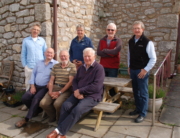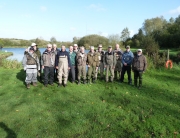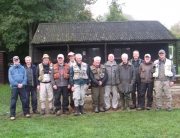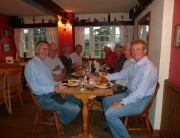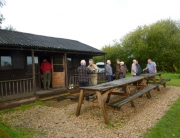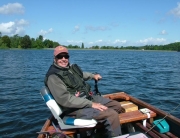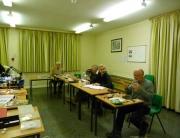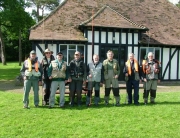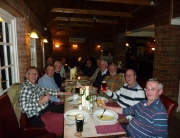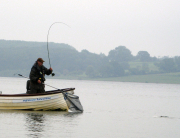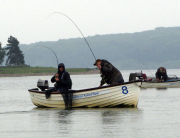Project Description
Alan Middleton described his demonstration as a “lighthearted swipe at fly tying, doing some useless techniques which should not be attempted, using bits of equipment you should not buy.” This was not entirely accurate since some techniques were very useful, even quite unique.
Alan demonstrated the (temporarily) popular Mop Fly tied with a fluorescent orange body cut from a floor mop with a metallic green tungsten bead and white fritz collar hackle.

Another fly was the Fishing Breaks May Fly (FB May Fly) which was tied with a body formed from sheeps wool, pheasant tail fibres and copydex adhesive to form the body and tail filaments. The wings were pure imitation, the head hackle was grizzle. Alan suggested using polypropylene film (food wrapping) for the wing instead of the imitation wings (@ 30p each). He advised using only one wing to avoid spinning the tippet or if using two wings, having 12lb fluorocarbon tippet which is stiff enough not to twist up. In the May Fly season the trout apparently don’t notice the tippet!

This was followed by a Thomas May Fly pattern and then Greenwell’s Glory patterns tied using various winging techniques – burnt wing, cut wing, butt feather followed by Parachute Adams with an interesting take on creating the parachute hackle. The hackle was constructed of 3 turns around the post starting at the bottom of the post, each one below the other and completing with 3 more turns taken over the hook shank and under the hanging tying thread to secure the hackle. The hackle can then be pulled tight and broken off.


